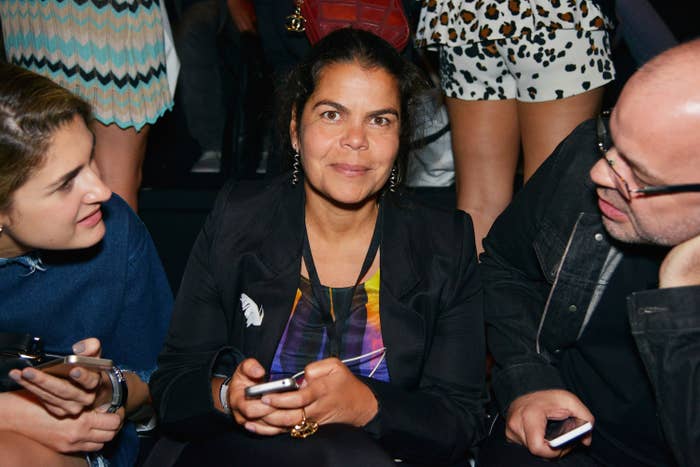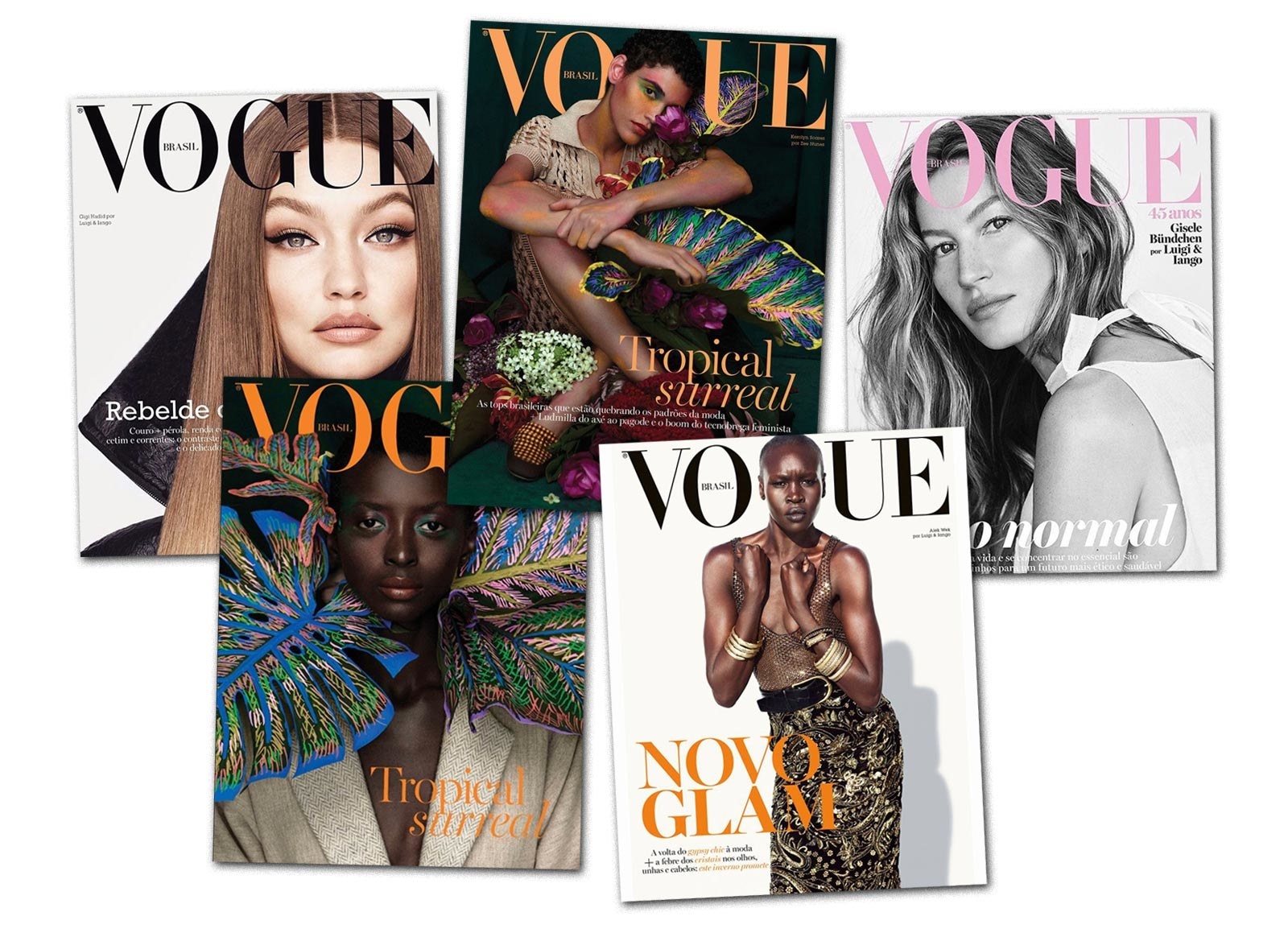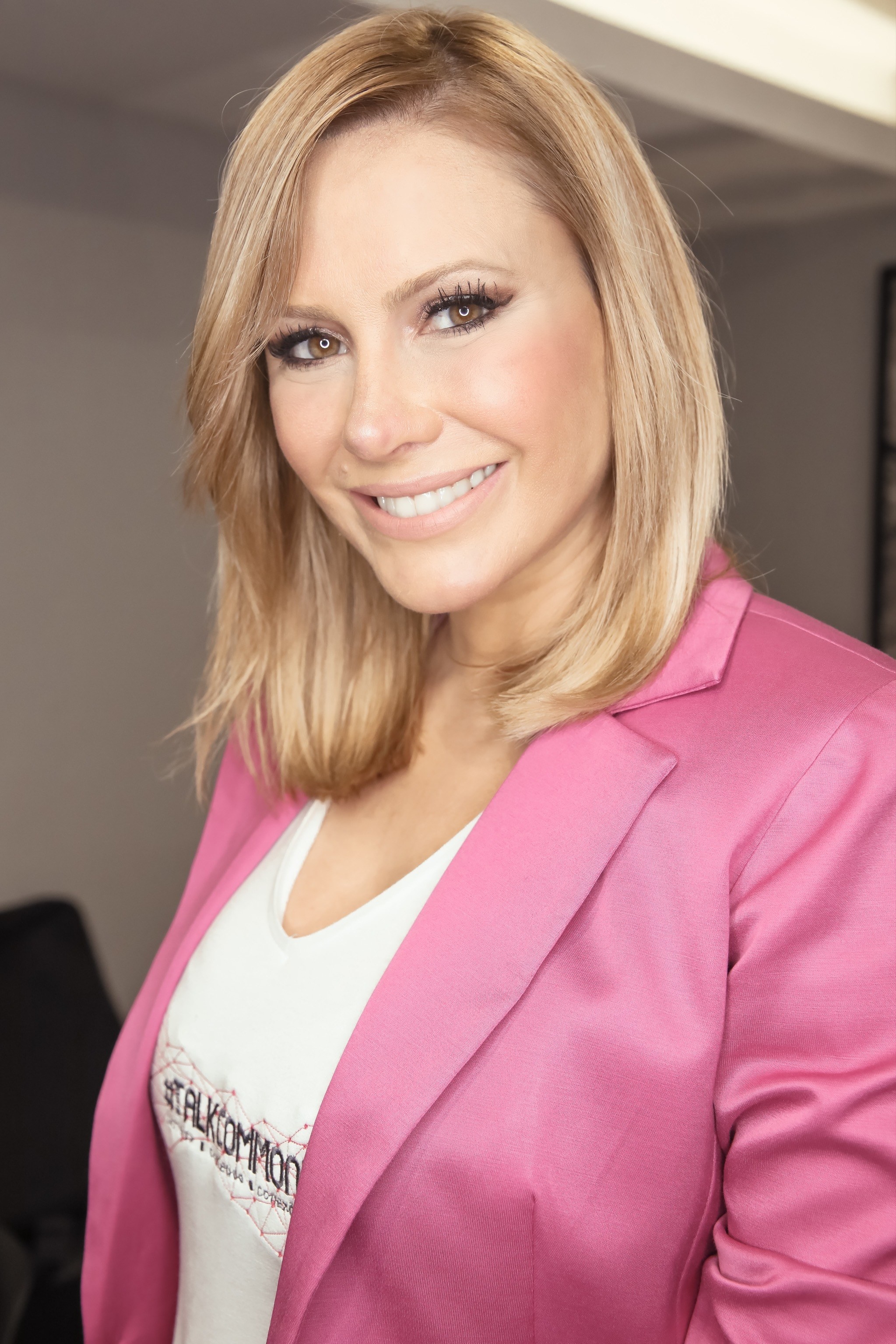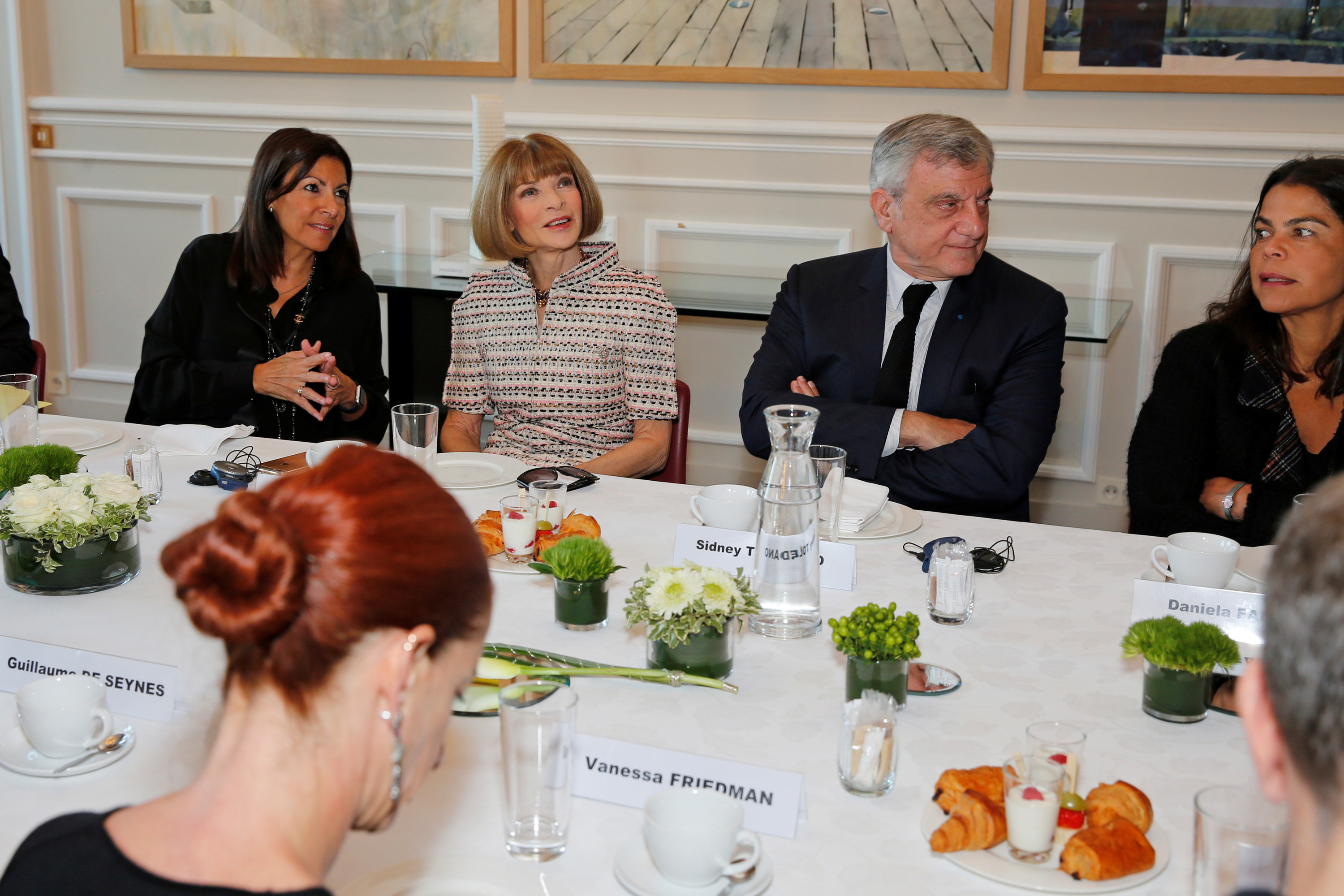When Marina Milhomem started working as an intern at Vogue Brazil in September 2016, she thought she’d landed her dream job. A 24-year-old journalism student without any connections, she never imagined that her first gig would be at the world’s premier fashion magazine.
But it didn’t take long for Milhomem to realize the dream was closer to a nightmare. Within hours of arriving for her first day inside Vogue’s offices, perched high in a mirrored office tower in one of São Paulo’s most exclusive neighborhoods, she heard loud yelling coming from the top editor’s office, followed by the emergence of an obviously upset coworker — a shocking practice that she quickly learned was routine. Soon thereafter, Milhomem noticed ruffled colleagues weeping in the bathroom, and that turned out to be routine as well.
Throughout the Brazilian newsroom where Vogue and several other world-famous Condé Nast magazine titles are published in a joint venture with local media conglomerate Grupo Globo, people joked that the bathrooms were never intended to meet people’s biological needs, but rather as private crying suites where shellshocked workers could retreat after another round of abuse.
“Humiliation was a constant,” said Milhomem, who now works as a visual artist. “Someone was always coming out of the bathroom with their face puffy from crying.
“I did it myself many times,” she added. “I cried a lot.”
BuzzFeed News spoke to 27 former employees and contractors of Globo Condé Nast publications in Brazil who independently described a pervasive culture of mistreatment, bullying, and exploitation dating back more than a dozen years. Although many asked not to be identified for fear of professional repercussions, five agreed to speak on the record.
Nearly all described witnessing their colleagues being berated or insulted — or personally experiencing abuse themselves — sometimes while being asked to work 24 hours or more without leaving the office, and being obliged to take on responsibilities and tasks outside their job description for which they were not compensated. One producer was so afraid of being accused of slacking off that she snuck out at lunchtime to get cancer treatments rather than tell her boss she was sick.
Employees said they lived in constant fear and dreaded interactions with their bosses, yet those brave enough to push back found little relief. One reporter, after being publicly compared to a spoiled child for standing up for herself, filed a complaint to human resources, only to be told she’d have to take a psychological test and answer a series of questions.

At the center of the most egregious mistreatment, employee after employee alleged, is Daniela Falcão, the brilliant, imposing former editor of Vogue Brazil — who since late 2016 has served as managing director of Edições Globo Condé Nast, the publishing venture between US-based Condé Nast and Brazilian media giant Grupo Globo. Often compared in Brazil to her American counterpart, Anna Wintour, Falcão today oversees the Brazilian editions of some of Condé Nast’s most iconic titles: Vogue, GQ, and Glamour, as well as Casa Vogue; since 2013 she has been ranked as one of the 500 most influential people in the world by the website Business of Fashion.
Known for her tireless work ethic, relentless perfectionism, and micromanaging style, Falcão, to a greater degree than anyone involved in Globo Condé Nast, is responsible for cultivating the publishing venture’s challenging culture, the employees said, and more than one of them compared her to the imperious editor played by Meryl Streep in the 2006 film The Devil Wears Prada.
The accusations of a toxic workplace are only the latest to emerge in what is fast becoming a global reckoning over the way companies treat their employees. Late last year, for example, the CEO of luggage maker Away resigned after reports of her abusive behavior. In July, the president of Hearst Magazines quit following allegations of inappropriate conduct. And earlier this month, three top producers of The Ellen DeGeneres Show were fired in the wake of a BuzzFeed News report detailing allegations of abusive conditions and sexual harassment in the workplace.
Condé Nast, headquartered in New York, has also been forced to confront accusations of difficult and unfair working conditions, particularly at food title Bon Appétit, where the editor-in-chief recently resigned after numerous staffers of color claimed they had faced discrimination at work.
Condé Nast did not respond to a detailed list of allegations about its Brazilian joint venture. A spokesperson said in a statement that the company, which has been publishing in the South American country since 1975, is “a minority stakeholder with Globo in a joint publishing business in Brazil. As with all of our business partners and licensees, we work with them to help ensure our global workforce and editorial standards are upheld, including the adherence to sustaining a workplace environment that prioritizes diversity and inclusion, respect and wellbeing. While we take a deeper look into the business operations in Brazil, we will continue to hold our partner accountable in creating centers of excellence for our employees, audiences and clients.”
Grupo Globo, which entered into the joint venture in 2010, is one of Brazil’s most powerful companies, controlling a dominant publishing and television empire that has no analogue in the US. It also failed to respond to detailed allegations of harassment within the joint venture, but in a statement said that it has an ombudsman and an independent compliance section that reports directly to Globo’s board.
“We don’t tolerate abusive behavior or any kind of harassment in our teams and all allegations are carefully investigated as soon as we become aware of them, with a complete guarantee of confidentiality for everyone involved in the process,” the statement reads. “We do not comment on the findings and we always take appropriate measures, which can range from a warning to termination.”
(Disclosure: the author of this article was among the writers contracted by Glamour to write editorial content for a special issue in 2019, only to later learn it was actually for an advertorial. After he criticized the publication on social media, Glamour publicly apologized “for not being clear from the first contact with all participants that there was a sponsor." In addition, one of the editors of this article in the past publicly criticized Globo Livros, the book publishing division of Grupo Globo, for asking him to remove references to the company before it would agree to publish a Portuguese translation of his book on soccer corruption. Globo eventually published the book, Cartão Vermelho, in Brazil without changes.)
Falcão, contacted multiple times over the past week to address the allegations made by former employees, ultimately did not respond. But in the past, she has acknowledged having a tough demeanor. “I have a reputation for managing with fear,” she said in a 2013 YouTube interview. “I was managed with fear. All the great editors — and I come from a newspaper background — are like, ‘finish it now!’ and they say a thousand other things that aren’t fit to print.”

For many employees at Globo Condé Nast, every single day promised new humiliations, beginning with a morning evaluation by Falcão of their outfits, according to interviews with several employees.
“What are you wearing?” Falcão would ask mockingly, one editorial staffer recalled.
“You can’t wear a turtleneck,” a young employee remembers Facão admonishing her. “Look at the size of your breasts!”
“Are you going to put on makeup?” a former designer said she heard more than once. “Where do you think you’re going with that face?”
But that was hardly the last of it. The criticisms continued all day long, sometimes shouted across the newsroom, according to a former employee who worked on Globo Condé Nast’s business side. “It was institutionalized,” this person said. “You’d go into a meeting knowing somebody was going to get yelled at. If it was someone else, you felt relieved and you’d thank God it wasn’t you.”

No one, no matter how junior or how senior, was immune, said Mônica Salgado, who started at Vogue in 2007 and for five years edited Glamour from its launch in Brazil until 2017. Falcão “used extremely strong language to discredit the work (or intelligence) of directors, interrupted their explanations, and downplayed their actions,” Salgado, now a columnist for a newspaper in the country’s south, wrote in an email.
She described her former boss as extremely intelligent and overflowing with intoxicating energy, the kind of person who is the subject of every cocktail party conversation. But Falcão is also highly manipulative, Salgado added, and domineering. “There was only one way to have a peaceful relationship with her: completely agree with all her positions and opinions,” she said. “There is no halfway.”
Marina Beltrame was just 20 when she started working as a producer at Vogue in 2006, and she quickly adapted to the rhythm of work “based on infinite hours, humiliation, and shouting.” Sometimes the abuse was direct, Beltrame said, and at other times it was more oblique, such as the time Falcão asked her if she was sick. When the younger woman said no, Beltrame recalled that Falcão abruptly changed her tone: “Well, you look sick. So go put on some mascara so I don’t have to look at that face of yours.”
Over time, Beltrame retreated into an emotional state that she eventually realized was unsustainable. “The phone would ring and I’d have heart palpitations,” she said. So great was her fear of being criticized or called lazy that when she learned she had cancer in 2012, she said she made a point of keeping it a secret from her colleagues — and especially her boss.
“I would have the treatments during lunchtime, hidden, not telling anyone,” said Beltrame, now a freelance fashion producer. “I didn’t say anything because I thought I had to be productive, a machine.”

“Do you want to work for Vogue?” an article published on Vogue Brazil’s website in mid-2016 read. “Then check out these tips!”
Among the suggestions: “Sleep just five hours a night”; “be physically and emotionally flexible”; and “multiply yourself and know how to multitask.”
The article was removed from Vogue’s site after being roundly criticized online, but in many ways it was an accurate reflection of the environment fostered at the publication by Falcão, according to descriptions by multiple employees.
Falcão, originally from the city of Salvador in Brazil’s impoverished northeast, came up in journalism as a newspaper reporter, at one point working as a foreign correspondent for the country’s largest daily, Folha de S. Paulo, in New York. When she was tapped to run Vogue in 2005 at age 35, she knew almost nothing about fashion, a fact she has readily confessed to over the years.
As an editor, Falcão proved meticulous, insisting that she personally approve every single page of every issue.“Imagine going over 300 pages and she’d reject something. I’d have to make up 11 or 12 versions of the same page,” said one designer, who asked not to be named. She recalled once being on a boat on vacation when Falcão called, insisting she stay on the phone, working until dawn to clear every single page of an issue.
Some former employees tell of being in the newsroom for 24 hours straight whenever an issue was closing. “I couldn’t do anything else. I was emaciated, I couldn’t sleep; I had insomnia and started getting panic attacks,” a different designer said.
During one brutal closing, Falcão had a particularly public run-in with a reporter that has since become part of Globo Condé Nast lore. After being told by Falcão that an article she’d been preparing would be held for a subsequent issue, the reporter turned to other pressing tasks, but at 8 p.m. on the final evening before going to press, the reporter was shocked to discover that her article was back in the current issue.
Soon after sending an email saying the article simply wasn’t ready, she and everyone else in the newsroom suddenly heard a shiver-inducing yell in the newsroom. It was Falcão, storming over to the reporter’s desk.
“She was screaming. Screaming. The staff of Casa Vogue and GQ, sitting 50 feet away, heard it and stared,” recalled the reporter, who asked not to be named. “She said, ‘You brat! Who do you think you are to do this to me? How dare you not turn in this article?!’ Then she bent over my desk and said, ‘Look me in the eye and tell me you’re not going to turn it in!’”
The reporter recalled clinging to a pile of transcripts of interviews she’d conducted for the article, trembling with fear. But she lifted her head and returned Falcão’s gaze. “I can’t do it,” she said. “I’m not going to stay in this newsroom all night. I won’t do it.”
That night she sent an email to human resources, complaining about the treatment. She had a folder on her hard drive labeled “harassment” filled with dozens of emails, and the following day she printed out a number of them and marched over to the HR department to share them. To her shock, HR responded not by asking her for more information about her allegations, but instead by asking her to take a psychological test and answer a series of seemingly unrelated questions, she recalled.
The entire experience made her feel like the abuser rather than the victim, a sentiment she said was reinforced by the fact that Falcão refused to have any contact with her from that point on. “For example, if I was in a room with her, she would say to someone else, ‘Tell that girl this, that, and the other thing,’ without ever directly addressing me.”
A few months later, the reporter resigned.
She said she never heard back from HR.
At least six Globo Condé Nast employees said they filed written complaints to the HR department about the workplace environment, two of which were reviewed by BuzzFeed News. Some people took things a step further.
In 2013, Tamara Foresti was hired as a lead writer at Glamour. “It was a dream to work there, especially in that time when magazines were still glamorous,” she said. At that time, Brazil’s economy was strong, and Globo Condé Nast’s titles groaned under the weight of all the advertisements.
Although Falcão did not yet oversee Glamour, employees from the time said that her influence was pervasive throughout the relatively small company, and that the other magazines suffered from the same abusive culture as Vogue Brazil. That culture, one employee said, is particularly prevalent in fashion, which often idealizes people who appear arrogant or even cruel. It was a culture, former employees said, that seemed to flourish at Globo Condé Nast, where Falcão was held up as a shining star.
Foresti lasted there less than two months.
“People were crying in the bathroom all the time,” she said. “I didn’t have enough confidence to do my own job.”
Upon resigning, Foresti said she told Alexandre Frota, at the time CEO of Globo Condé Nast, about the workplace environment and the culture of abuse. After that, she said, she was summoned for a meeting with Frederic Kachar, the powerful head of Globo’s entire publishing division, and repeated her story.
“The same thing happened: nothing,” said Foresti, who gave up journalism after the experience and today works in marketing in Spain. Two other ex-employees of Globo Condé Nast said they met Kachar to discuss the work culture, with similarly fruitless results. An additional two employees said they filed complaints with Globo’s ombudsman, which also led nowhere. Several others said they explored filing lawsuits but ultimately never did for fear of getting blackballed in Brazil’s media industry
“People keep working in this market,” one of them said. “Who is going to hire the person that sued the most powerful woman in fashion?”
Frota, who now works for Louis Vuitton South America, did not respond to several requests for comment. Kachar did not respond to a direct query about the allegations, and Grupo Globo did not respond to a request for a detailed response from Kachar.
Salgado, the former Glamour editor, said she came to believe that complaining about harassment to HR was a useless exercise.
“Neither the HR department (which in the times I spoke to them didn’t seem particularly independent), nor the compliance department, nor the higher ranking officials showed any signs of condemning what was going on,” Salgado said in an email. “The general feeling was that it wasn’t worth making a formal complaint, because it had become clear nothing would change. And fear of retaliation was real.”
None of the employees who filed complaints about harassment at Globo Condé Nast ever heard a response from the company, they said.
Brazil’s economy, once booming, fell on hard times starting about five years ago, and the growth of the internet continued devastating print media. In 2018, Vogue Brazil had a circulation of 78,000 copies per month; by 2019 that figure had fallen to just 43,000, according to data circulated to advertisers by Globo Condé Nast. In that climate, the pressure on newsroom budgets grew intense, and, according to some employees and contractors, that manifested itself in trying to get more work for less money.
“I felt ashamed when I had to call a photographer or a creative,” said one designer who worked for much of the past decade at Globo Condé Nast. “I got to the point of having shoots in my house, because the location budget was zero.”
In early 2019, hairstylist and makeup artist Dindi Hojah, who had worked with celebrities including Kanye West, said he was hired for what he was told was a cover shoot for Glamour. The fee was 150 reais, he said, the equivalent of about $40 at the time, less than what he usually paid his assistants for a single gig. But he was excited to work on a cover, and so decided to accept the low pay.
But several hours into the job, he said he was told that he needed to help with a second shoot, this time for an advertisement to run on the magazine’s back cover that he said was “a different look, different lighting, everything different.” Not only did he have to do a second, unexpected shoot, he recalled, he was also told he had to make an accompanying tutorial video that would be posted on the magazine’s social networking accounts. “Nobody told me about any of this,” Hojah complained.
In all, the job ate up more than 12 hours, he said, and he finished after 1 in the morning. But the fee remained just 150 reais, he said. Only after he finally spoke up and demanded more did the company pay him 1,000 reais (then about $265), he said, “which is really nothing for a back cover advertisement in a national magazine.”
Hojah said the expectation that people work for free, or nearly so, is pervasive at Globo Condé Nast, and an intrinsic part of the overall environment of exploitation and abuse that seems to continue completely unchecked.
“People accept this because we know the importance of participating in the game. We know how one Vogue cover can change your career,” said Hojah. “We run into this because we are victims of a hierarchy of power, which we are subjected to all the time.”
A significant number of former Globo Condé Nast employees admitted to feeling admiration for Falcão and even keeping in touch with her despite leaving the company because they couldn’t tolerate the work culture. Many praised her passion for the job, and her unyielding perfectionism, conceding that despite the challenges, she taught them a lot about journalism.
“She was the only editor I ever had that sat with the reporter and went through the text, word by word,” one journalist recalled. “Leaving aside the fact that she humiliates you or never knows how to not be harsh, to call a sentence tacky or whatever, she taught you, she took you by the hand. It’s really an exquisite thing.”
Another former employee, who worked at Globo Condé Nast Brazil for three years, said her time there was difficult but it taught her the most valuable lesson of her career.
“What’s important isn’t which designer you’re wearing. It’s not the color of your lipstick. The important thing is how you treat other people.” ●
